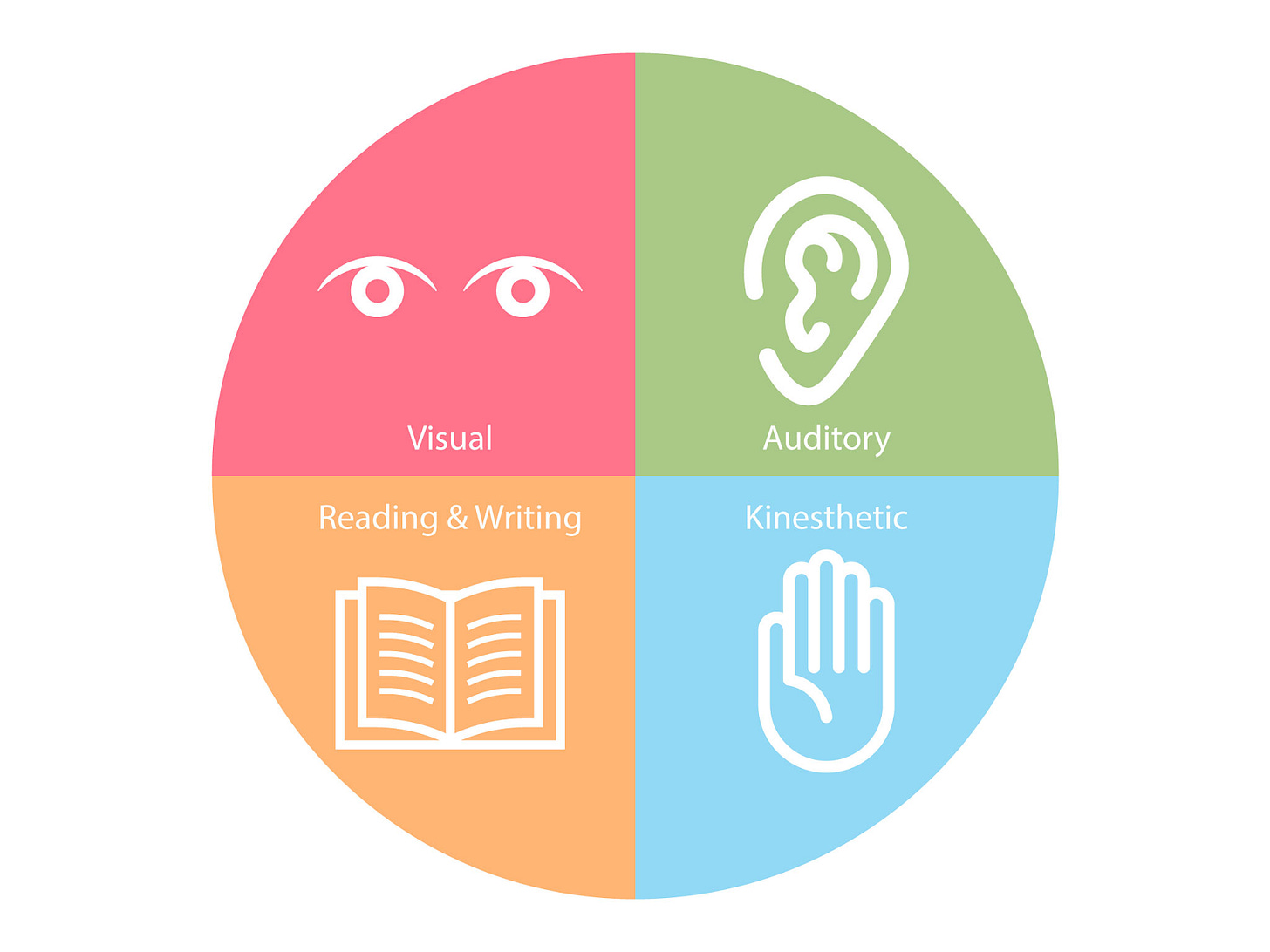The Learning Styles Edition
On VARK, data, and flexibility
Noah here. Most of us grew up with some sense that there was a specific learning style that best suited us. We understood ideas better when we read them than when we heard them or when we saw them visualized instead of put into words on a page.
While there are a few different models of learning styles, the most famous one is probably Neil Fleming’s VARK, which stands for visual, aural, reading & writing, and kinesthetic learning. While Fleming’s model didn’t strictly require that everyone just fall into one bucket, it was widely interpreted that way.
Why is this interesting?
It turns out that the idea of each person learning best with their specific learning style is unproven. From a 2018 Atlantic piece:
A lot of evidence suggests that people aren’t really one certain kind of learner or another. In a study published last month in the journal Anatomical Sciences Education, Husmann and her colleagues had hundreds of students take the VARK questionnaire to determine what kind of learner they supposedly were. The survey then gave them some study strategies that seem like they would correlate with that learning style. Husmann found that not only did students not study in ways that seemed to reflect their learning style, but those who did tailor their studying to suit their style didn’t do any better on their tests.
While it sounds good and makes intuitive sense that each of us has a style of learning we connect best with, study after study fails to prove it out. That doesn’t mean it’s not true for any one of us, of course, but the research doesn’t bear it out at a population scale. Unfortunately, at this point, the idea of learning styles is very deeply ingrained in the world of learning and teaching. From the American Psychological Association:
Previous research has shown that the learning styles model can undermine education in many ways. Educators spend time and money tailoring lessons to certain learning styles for different students even though all students would benefit from learning through various methods. Students study in ways that match their perceived learning style even though it won’t help them succeed. Some teacher certification programs incorporate learning styles into their courses, which perpetuates the myth for the next generation of teachers. Academic support centers and a plethora of products also are focused on learning styles, despite the lack of scientific evidence supporting them.
In the landscape of disproven research, learning styles seems reasonably benign. The problem, however, is that concepts like this take time and energy away from more proven, important, and relevant methods. “For example,” a piece in Education Next explains, “the National Council on Teacher Quality’s textbook study found 59 percent of textbooks did not even mention the six highest-impact teaching methods identified by the Institute of Education Sciences more than a decade ago … Meanwhile, more than half of textbooks included details about learning styles.”
While it will likely take a while to flush the idea out of the system, at least we can all do our part to help the learners in our lives understand they’re capable of learning in many ways. (NRB)
—
WITI x McKinsey:
An ongoing partnership where we highlight interesting McKinsey research, writing, and data.
On inflation, world trade, and unemployment in China. McKinsey’s Global Economics Intelligence explores rising food and energy prices, slow GDP growth and growing unemployment in China, a slowdown in world trade, an increase in interest rates, and more. Don’t miss the analysis.
—
Thanks for reading,
Noah (NRB) & Colin (CJN)
—
Why is this interesting? is a daily email from Noah Brier & Colin Nagy (and friends!) about interesting things. If you’ve enjoyed this edition, please consider forwarding it to a friend. If you’re reading it for the first time, consider subscribing (it’s free!).



